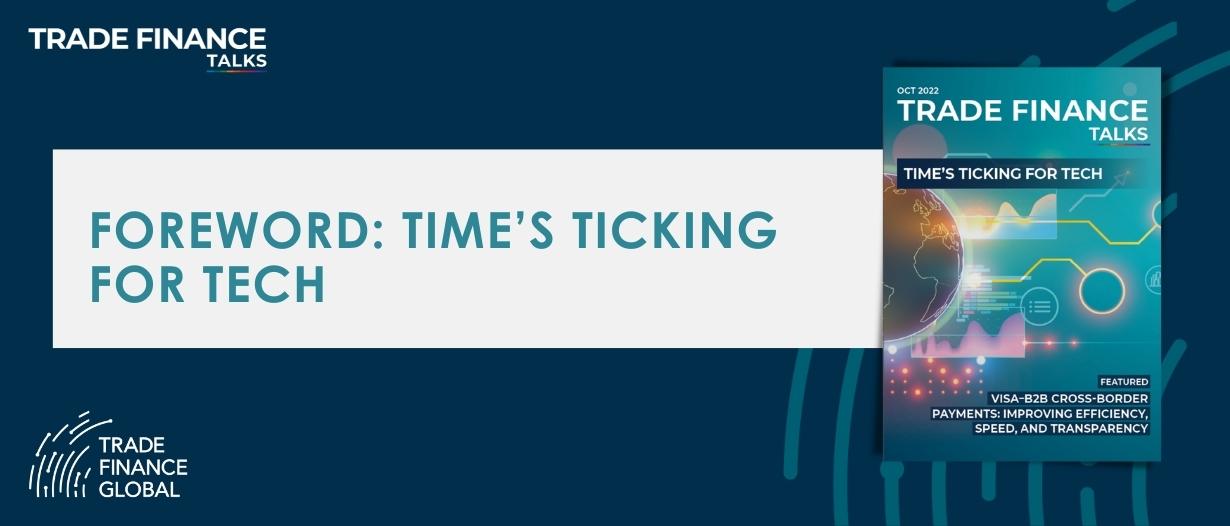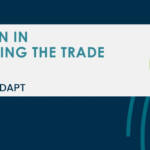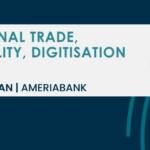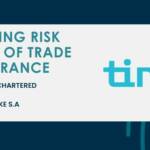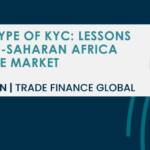Estimated reading time: 5 minutes
“There is nothing permanent except change.”
Greek philosopher Heraclitus’ words, written more than 1000 years ago, ring truer today than ever before.
Change can come at any point and can be catalysed by any manner of things. Trade has proven no exception to the rule. US inflation is at a 40-year high, sovereign debt is soaring all around the world, and there’s no end in sight with the devastation between Russia and Ukraine.
At the World Trade Organisation’s (WTO) Public Forum this month, we heard Director general Dr Ngozi Okonjo-Iweala admit that the world is heading towards a global recession due to a “collision of poly-crises around security, climate, energy, [and] food prices”.
“The world cannot afford to do business as usual,” Okonjo-Iweala said.
Yet, the counter-cyclical nature of trade against sluggish economic growth is creating an urgency toward affordable, inclusive, and resilient trade.
Digitisation has once again come first place in the trending trade top of the pops, with murmurings of electronic bills of lading (eBLs), non-fungible tokens (NFTs) and legal reform also joining the party.
It’s all quite overwhelming.
Taking a step back though, there have been pockets of success at impressive speeds around many innovations seizing the market, scale is now key. To name a few detailed in this issue; Visa B2B connect, SGTraDEX (with Veridapt), SWIFT’s messaging standards, and African payments developments have all catapulted trade, treasury, and payments.
This issue of Trade Finance Talks aims to deconstruct the tenets facilitating change in the landscape.
Emerging markets face the most challenges
As the youngest continent in the world, with immeasurable levels of untapped wealth, industry leaders’ heads have been turned toward one region in particular: Africa.
Traditionally the African subcontinent has faced many obstacles to accessing trade finance and US dollar liquidity.
This issue has been intensified by inflation hikes and supply chain strains. And African small- and medium-sized enterprises (SMEs)––who provide a bulk of employment––are the ones feeling the brunt of this.
The $120 billion trade finance gap remains a big problem in the African eco-system. This figure is set to rise on account of geopolitical, social, and economic turmoil since.
Though the facts present themselves in bleak hues, the fact remains that the large and majority-untapped African market has much to offer.

Elsewhere, there has been a growing trade finance problem in emerging markets.
The current risk landscape has led to dwindling correspondent and respondent banking relationships, whose effects have been far-reaching.
Rather unsurprisingly, this has disproportionately affected smaller economies, with credit departments becoming more apprehensive about allocating limited capital to ‘risky’ investments.
TFG spoke to the Caribbean Association of Banks (CAB) about seeking correspondent banking relationships as far as Pakistan. As TFG heard at EBRD’s Trade Facilitation Programme in Istanbul last month, the same issues are being faced across central Eastern and European nations.
The effects of ‘derisking’ are extremely damaging to local communities, who rely on the dollar or euro imports. Elements such as inflation and the inability to clear payments in local currencies have brought additional challenges.
Access to healthcare, travel, and education are all placed in the firing line once large banks start to retract support.
Every cloud
Risk is at an all-time high, which permeates almost all areas of trade and export finance.
This has mostly manifested as a retreat up the credit curve, with BBB+ businesses and below feeling the blow the most.
Does the umbrella open when it rains? TFG invited leaders from the CPRI industry to discuss risk appetite, changes within the credit insurance market and innovations during these challenging times.
New regulatory constraints such as Basel III reform and European Commission amendments to the Capital Requirement Regulations (CRR) have only heightened the issue, hindering banks to lend more to SMEs.
Perhaps innovations in securitisations or tokenising pools of trade finance assets to open the industry up to new institutional investment could be key.
Of course, we must not forget the power of tech in this matter.
Sure enough, increased operability and efficiency, thanks to artificial intelligence (AI) and new data solutions, have significantly aided in client relations––but these are not the only means by which digitisation has bolstered the trade industry.
Tick, tick, tech
Technology. A double-edged sword whose powers for good and nefarious are often times equally balanced.
Anti-money laundering (AML) and know your customer (KYC) may not be the first thing that comes to mind when technology is mentioned, but it is an issue frequently cited in the field.
Digitisation of documents also comes with pitfalls. Duplicate financing fraud is another sub-genre aggravating the trade finance industry and the trade finance gap in its wake.
It is difficult not to focus solely on the negative aspect of technology, especially when the repercussions of certain elements have far-reaching ramifications.
However, the realm of tradetech has brought about deep-running and tangible positive effects, most keenly felt––in rather a full-circle affair––in the emerging markets sector.
Accessibility to platforms facilitating cross-border payments has alleviated problems long faced by developing economies. And in many ways, new digital initiatives have levelled the proverbial playing field.
Indeed, technology has allowed a myriad of positive changes to take place, not least helping lessen sustainability consequences generated by a paper-based industry.
It is safe to say that issues surrounding digitisation are not so black and white; whether the advancement of tech is a ticking time bomb, or trade’s saving grace, remains to be seen.
Time’s ticking for tech.
Once again, we thank all of our sponsors, associations and partners for their support of Trade Finance Global.















